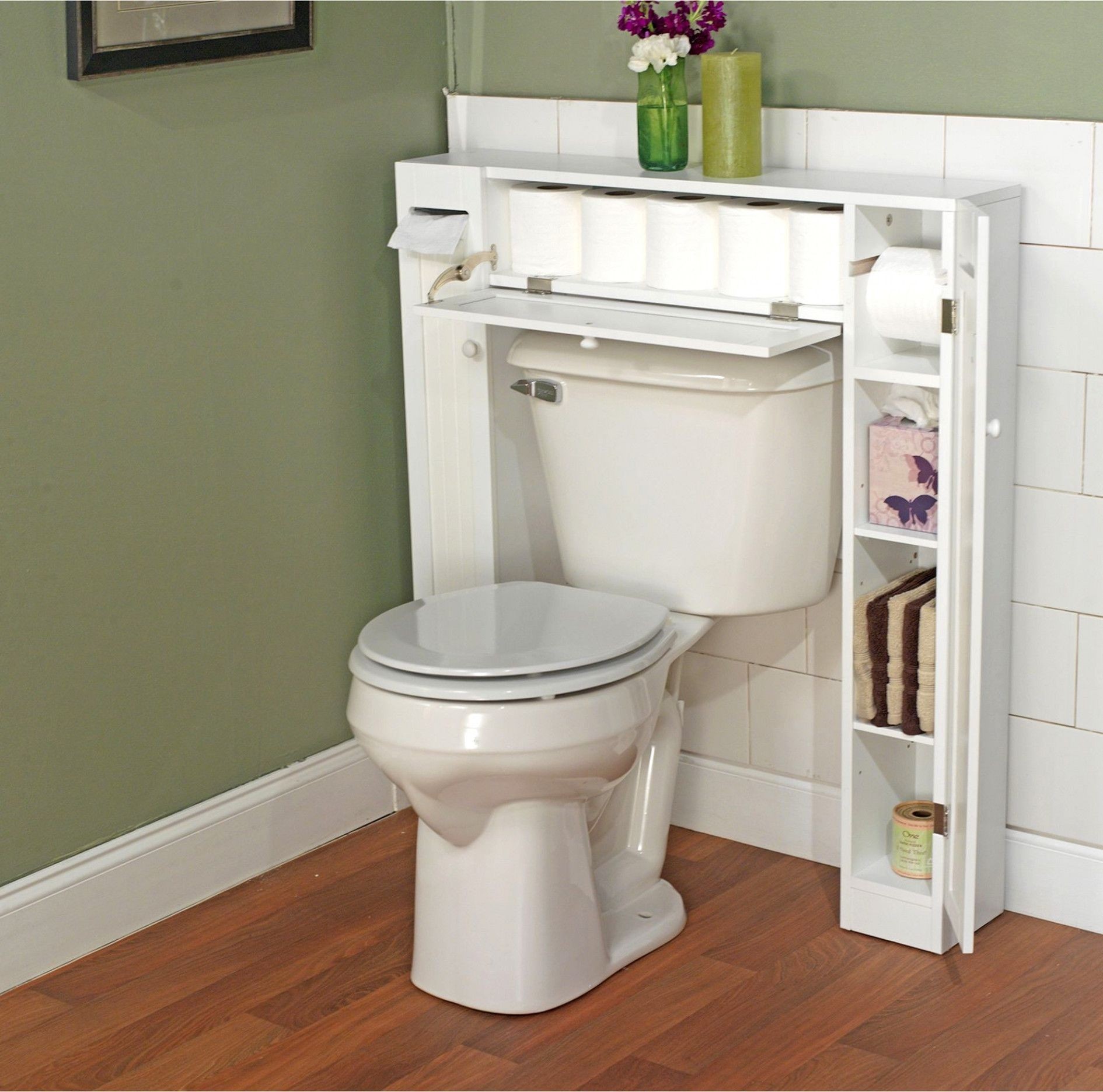Construction Techniques & Customization: Diy Over The Toilet Cabinet

Building a sturdy and attractive over-the-toilet cabinet requires careful consideration of joinery techniques and customization options. The choice of construction method will influence both the cabinet’s strength and its aesthetic appeal, while customization allows for a truly personalized touch that complements your bathroom’s design.
Joinery Techniques
Several joinery techniques offer reliable methods for assembling the cabinet’s framework. Each method presents unique advantages depending on your skill level and the desired level of strength and visibility.
- Dowel Joints: Dowel joints utilize small wooden dowels inserted into pre-drilled holes in adjoining pieces of wood. Glue is applied to the dowels and holes before assembly, creating a strong and relatively simple joint. This method is ideal for beginners due to its straightforward nature and forgiving tolerances. The finished joints can be aesthetically pleasing, especially if using concealed dowels. A well-executed dowel joint provides excellent strength and stability for the cabinet structure.
- Pocket Hole Joints: Pocket hole joinery involves using a jig to drill angled holes into the end grain of one board. Screws are then driven into these holes, creating a strong and hidden joint. This technique offers significant strength and is quicker than dowel joints for larger projects. While the screw holes are hidden, they are not completely invisible, so consider this if you are aiming for a completely seamless finish. Pocket holes are particularly well-suited for assembling the cabinet’s frame.
- Biscuit Joints: Biscuit joints utilize thin, oval-shaped biscuits of compressed wood that are inserted into slots cut into adjoining boards. Glue is applied to the biscuits and slots, creating a strong and relatively quick joint. This method is suitable for both face-frame and frameless cabinets, offering good strength and alignment. Biscuit joints are less visible than pocket holes but offer a strong and stable bond, making them a good choice for experienced DIYers.
Hardware Installation, Diy over the toilet cabinet
Installing the hardware correctly ensures both functionality and longevity of your over-the-toilet cabinet. Careful placement and secure attachment are crucial.
Diy over the toilet cabinet – Hinges should be chosen based on the cabinet’s weight and door style. Soft-close hinges are recommended for a smooth, quiet operation. Precisely mark hinge locations and use appropriate screws to attach them to both the cabinet door and the cabinet body. Ensure the hinges are aligned to allow for proper door closure.
Handles should be selected to complement the cabinet’s style and chosen hardware finish. Mark the handle locations carefully and pre-drill pilot holes to prevent splitting the wood. Use screws of appropriate length and secure the handles firmly to the cabinet doors.
Shelves can be installed using shelf supports, shelf pins, or cleats. Ensure that the shelves are securely attached to the cabinet’s frame and that they can support the intended weight. Shelf supports offer adjustability and are easy to install. Shelf pins are a more concealed option but may require more precise drilling.
To securely attach the cabinet to the wall, use appropriate wall anchors and screws. Locate wall studs for optimal support and use screws long enough to penetrate the studs securely. Always follow the manufacturer’s instructions for your chosen wall anchors and screws. A level is essential to ensure the cabinet is mounted straight and plumb.
Customization Options
Personalizing your over-the-toilet cabinet adds a unique touch to your bathroom. The following options offer different avenues for enhancing its aesthetic appeal and functionality.
- Decorative Molding: Adding decorative molding to the cabinet’s edges and corners can significantly elevate its visual appeal. Choose molding profiles that complement the overall bathroom style. Use wood glue and finishing nails to secure the molding. Ensure that the molding is properly mitered at the corners for a clean, professional finish. Painting the molding to match or contrast with the cabinet adds another layer of personalization.
- Integrated Lighting: Incorporating lighting adds both functionality and ambiance. LED strip lights can be installed behind the cabinet’s back panel or under the shelves for soft, indirect lighting. Ensure that the lighting is properly wired and connected to a power source. Consider using a dimmer switch for adjustable brightness. This feature can be particularly useful for small bathrooms lacking adequate lighting.
- Built-in Mirror: A built-in mirror adds practicality and visual interest. A framed mirror can be recessed into the cabinet door or attached to the cabinet’s front panel. Ensure that the mirror is securely attached and properly sealed to prevent moisture damage. Consider using a mirror with beveled edges for a more sophisticated look. The mirror should be large enough to provide ample reflection while still fitting harmoniously within the cabinet’s design.
